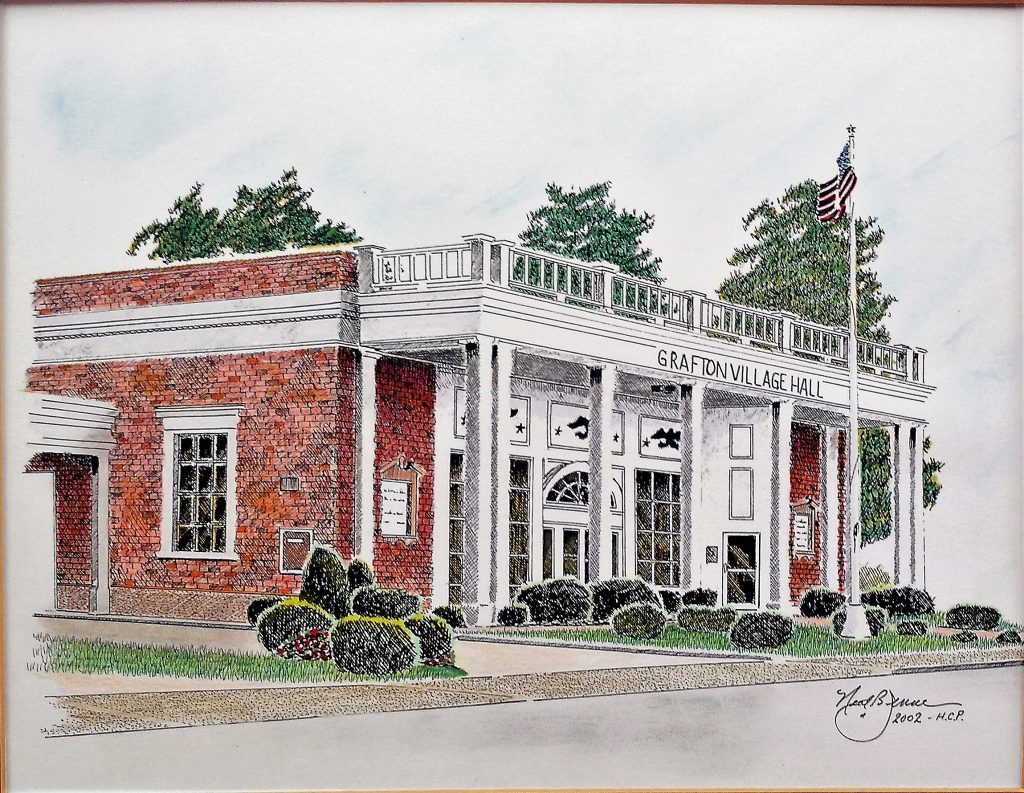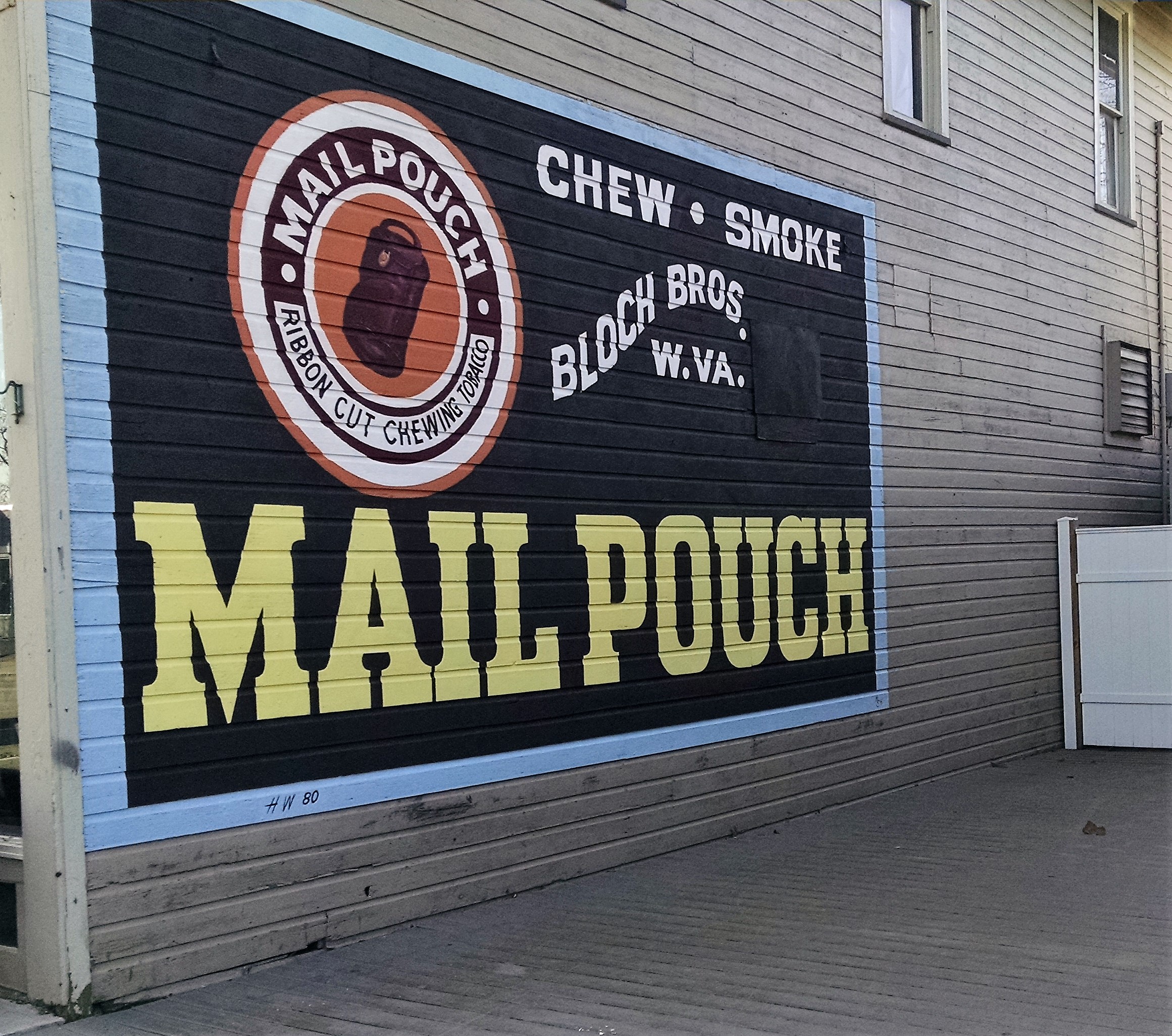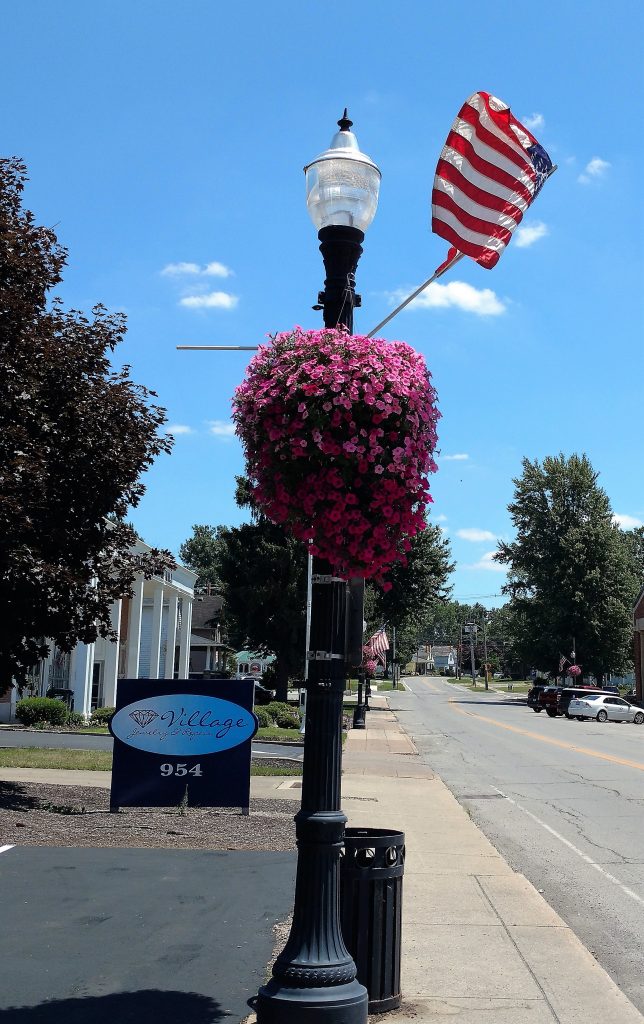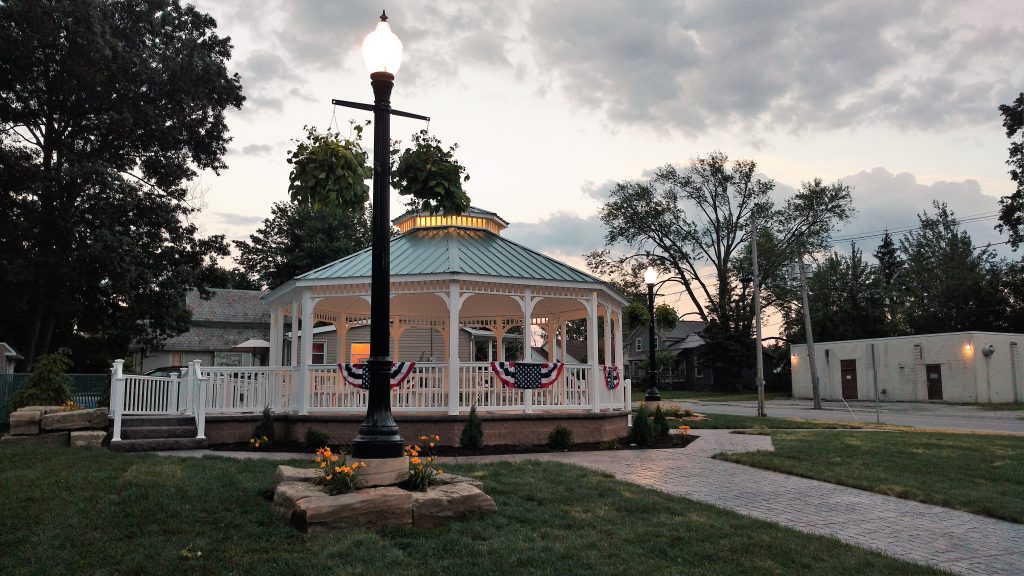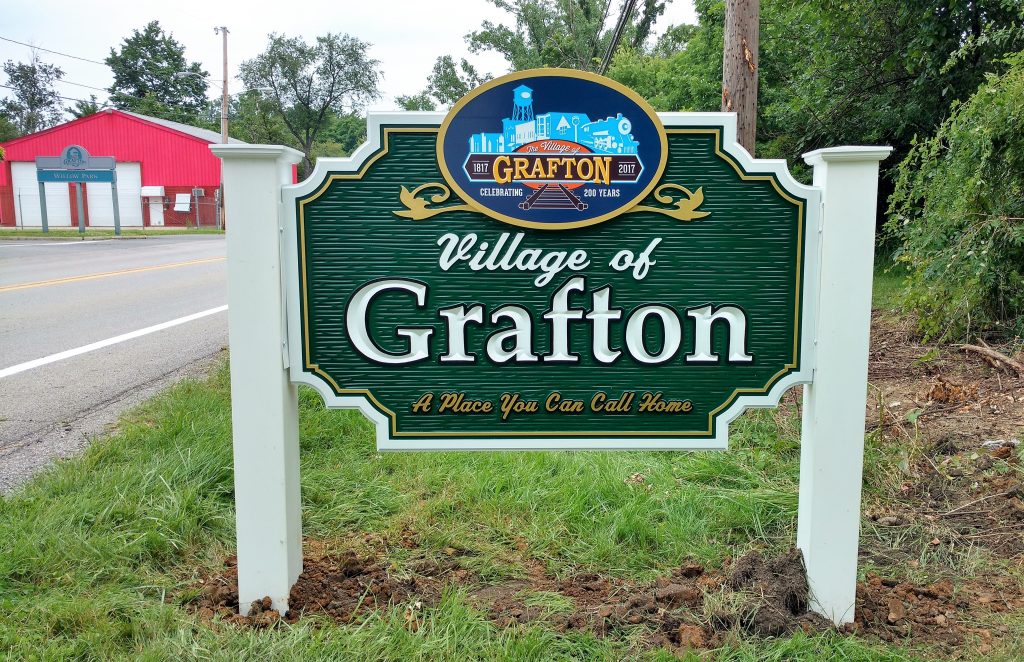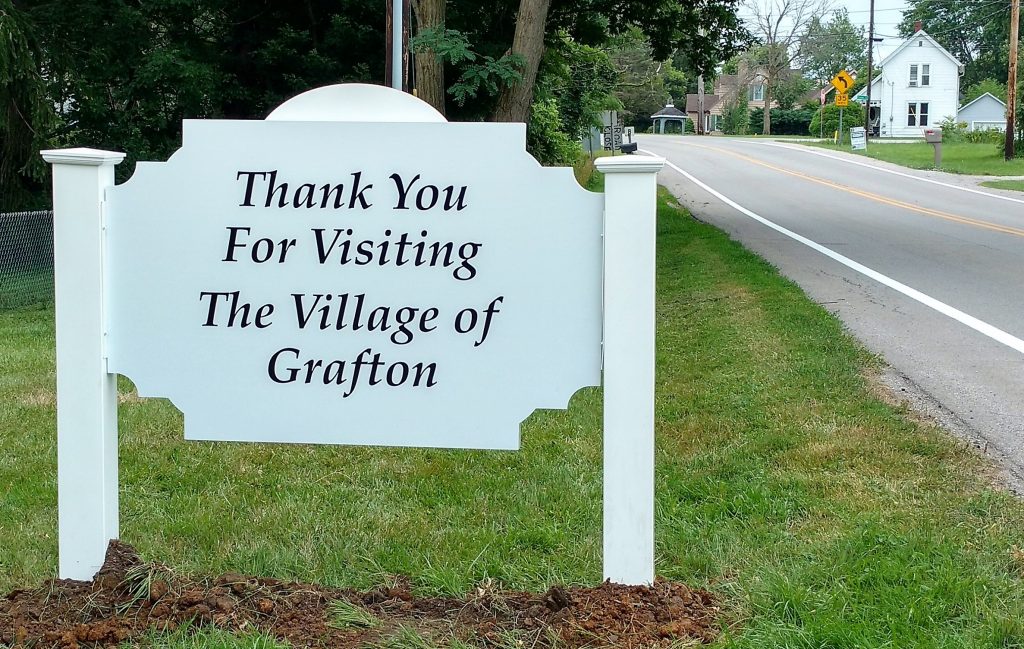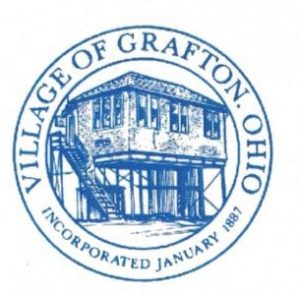 A Community Heritage Dedicated to People, Prosperity and Pride…
A Community Heritage Dedicated to People, Prosperity and Pride…
In 1816 Jonathan and Grindall Rawson, brothers from Massachusetts, traveled to Connecticut Western Reserve, in Ohio Country, to locate the 160 acres in Township 4, Range XV1, their father, Samuel had purchased from the Connecticut Land Company, then returned east.
Jonathan and his wife, Dolley and Grindall returned in 1817. Jonathan had selected Lots 1 and 2 in Township 4 (today’s Grafton Township) as well as sections of Lots 81 and 100 in Township 5 (today’s Eaton Township). They built a cabin on Lot 1. In 1818, Grindall would build a cabin on Lot 3, opposite today’s Willow Park and his marriage to Mariah Ashley would be the first marriage recorded in the township. In 1825, due to an increasing family, a homestead was built across the Elyria-Medina Road.
The Rawsons and Nathaniel Boughton erected a sawmill in today’s Willow Park area, followed by a grist mill in 1826 to accommodate the steady stream of newcomers.
Charles Fowler of Warren County, New York, an investor in the Western Reserve, owned property in Township 5 (Eaton) abutting Grafton Township. When the railroad came to town, with an eye on the future, he bought all of Jonathan Rawson’s land in 1853. Son, Charles Augustus Fowler arrived in 1855 with deeds in hand. He immediately had the land surveyed and platted into 139 lots. Fowler added 24 lots on the north side of the tracks, our first allotment.
Rail tracks, sandstone, grist, crackers and castings combined to build our village.
In 1846, the Cleveland, Columbus and Cincinnati Railroad (CCC RR) completed its track survey. Since there was no large settlement in the township within four miles of the route and water was available, the railroad would build a station here if Jonathan would plat a village. The 15 Lots along the Elyria-Medina Road that Jonathan had sold since 1820 became Grafton Station, so named by the railroad and accepted by the postal service in January 1852. Two hotels were built to accommodate the railroad people, the Whitbeck in 1846 and the Hand in 1852.
Due to the confusion with Grafton Center, Grafton Township and Grafton Station, the name of the village was officially changed to Rawsonville in May 1852.
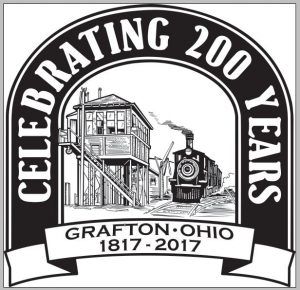 Railroads were built north and south of the CCC but it was not crossed until 1871 when the Lake Shore Tuscarawas Valley RR came from Lorain to run to southern Ohio. Later, the LSTV became the B&O. Today, both railroads through town are the CSX (Chessie, Seaboard and Many More). Mementos of the railroad era include a C&O caboose, the circa 1913 railroad control tower, retired in 1984 and a 300 pound cast metal “Tower Man” constructed by Filipiak’s art class and the Larson Foundry.
Railroads were built north and south of the CCC but it was not crossed until 1871 when the Lake Shore Tuscarawas Valley RR came from Lorain to run to southern Ohio. Later, the LSTV became the B&O. Today, both railroads through town are the CSX (Chessie, Seaboard and Many More). Mementos of the railroad era include a C&O caboose, the circa 1913 railroad control tower, retired in 1984 and a 300 pound cast metal “Tower Man” constructed by Filipiak’s art class and the Larson Foundry.
In 1849, sandstone was discovered near Parsons and Indian Hollow Roads. Immigrants from Poland, Wales, Ireland and Germany came to work in the quarries. Amos Tran found sandstone in the Willow Park area in 1877 on the Rawson Property. The Quarries were a world-wide business until the use of cement changed building procedures circa 1920.
The Shadford Grist Mill opened in 1858 in the gully on the west side of Main Street. A second mill opened in early 1860s. A small dammed stream provided water power. These mills closed when the Rawson Mill was built on Mechanic Street in 1883. Names involved in this mill include Bennington, Hancox and Bennett. In 1929, the general headquarters of Sunshine Biscuits was established here. After 4 years of work, 25 silos were completed in 1935. Since 1969, there have been various owners. In 2009, all the elevators and buildings were removed. The facility is now used for grain storage.
In 1920, the Osborn Manufacturing Company of Cleveland opened a foundry on Barchard Street. Walter Larson, Sr. purchased the plant in 1933. The W. O. Larson Foundry Company produced all sizes of iron castings. In the 1950s, son, W. O. Larson, Jr. opened an aluminum foundry. General Castings took over in 1993 and closed in the late 1990s. So ended Grafton’s industrial past. Currently, on the north side of town, a commercial district on Commerce Court has been developed with a variety of small manufacturers.
The north side of town remained a farming area until the 1950s. With limited space for growth in downtown Grafton, businesses moved north and today most every type of business is located there. Many housing developments have grown around the area.
When the village was incorporated on January 1, 1877, the name was changed to Grafton. A colonial style building on Main Street, a former bank building, is our Town Hall. Our village is governed by a mayor and council and cared for by efficient utility and street crews. The police department has grown from the village constable to a force which includes a police chief, three full-time patrolmen, three full-time dispatchers and several part-time patrolmen and dispatchers. Two stations are maintained by the fire department. Although the fire department is still a volunteer group, it is well equipped and trained. EMTs stand by for emergencies. Six parks provide “green space.”
Postal service opened in 1852 with the first “post offices” in the postmaster’s place of business, a box on the counter. Rural service began in 1901; however, house to house delivery started on March 7, 1959.
Organizations such as the Grafton-Midview Kiwanis Club, the VFW, Grafton -Midview Business Association, Grafton-Midview Woman’s Club, Grafton Village History Association and church groups work to provide services and entertainment to the village.
Banking services were provided in 1917 when a group of local businessmen organized the Grafton Savings and Banking Company. The GSB merged with Elyria Savings and Trust in 1963. EST moved across the street into a new building in 1970. Lorain County Savings & Trust opened on the north side in 1981. In 2010 First Merit and First Place Bank have offices on the north side.
The first school opened in 1849 on Rawson property near Willow Park, moved to Chestnut Street in 1868, replaced the building in 1876, and constructed a complete 12 year school in 1892. The Elm Street school building, 1936-1955, is listed in the National Register of Historic Places. The Midview School campus on Capel Road, the result of the 1953 consolidation of four area schools, is our education center.
A collection of books in an Elm Street School classroom in 1936 was the beginning of our library. In 1972 the Grafton Library moved into the former GSB bank building on Main Street. In May 1991, renovated and enlarged, it was renamed the Grafton-Midview Public Library. The library provides many activities for all ages as well as educational enhancements.
Members of the Immaculate Conception Church worshiped in 1865 in a small building moved to Erie Street. A new stone church was dedicated in 1871. The First Congregational church opened in 1855 on Oak Street and dissolve in 1928. Methodists started meeting in Hart’s Hall in 1871, although many had attended the Old Brick Church on Indian Hollow. Their church on Mechanic Street was dedicated in 1875. The Polish villagers attended the dedication of the Assumption Church on Elm Street in 1874. The new parish, resulting from the merger of the I.C. Church and the Assumption was celebrated October 29, 2006. Our Lady Queen of Peace Church was dedicated in April 2010.
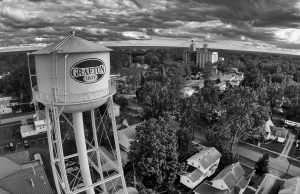 The north side of town, with its hustle and bustle, serves many of our needs. Downtown Main Street has become a quiet place, with offices, restaurants, a gas station, various businesses and Water Tower Park. The library, town hall and post office are its calling cards. The ‘old’ village with its false front businesses and muddy or dusty streets has progressed from an industrial area to a bedroom community with its many commuters. Sandstone sidewalks, the mill silos and old buildings still in use as well as the whistle of trains remind us Grafton will always be home.
The north side of town, with its hustle and bustle, serves many of our needs. Downtown Main Street has become a quiet place, with offices, restaurants, a gas station, various businesses and Water Tower Park. The library, town hall and post office are its calling cards. The ‘old’ village with its false front businesses and muddy or dusty streets has progressed from an industrial area to a bedroom community with its many commuters. Sandstone sidewalks, the mill silos and old buildings still in use as well as the whistle of trains remind us Grafton will always be home.
_______________________________________________
